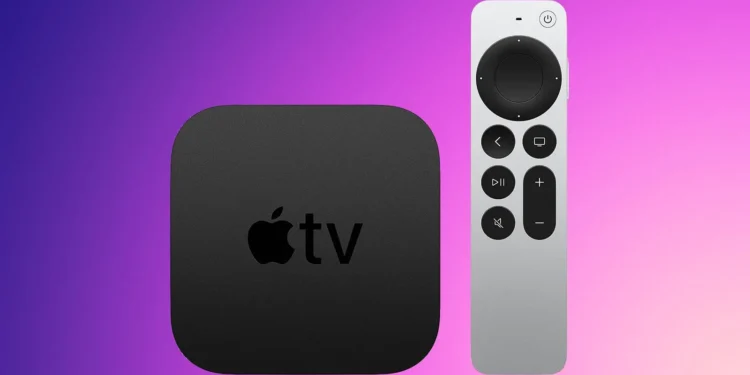As tech enthusiasts eagerly anticipate, the rumoured 4th-gen Apple TV 4K appears poised to hit the market just when consumers are clamouring for more robust home entertainment solutions. Amidst a backdrop of fierce competition and rapid technological advancements, Apple’s timing couldn’t be better. The excitement builds as the potential release of this new device promises to deliver a powerhouse of performance and innovation.
The Apple TV 4K has become a household staple for many, offering a gateway to premium streaming experiences. Since the release of the third-generation model in late 2022, the buzz has consistently grown around what Apple would offer next. With a traditional two-year release cycle, expectations are high, and the latest insights from Bloomberg’s Mark Gurman suggest that Apple might unveil the new device in 2025, alongside an updated HomePod mini. This dual-release strategy not only caters to audiophiles seeking a superior sound experience but also solidifies Apple’s commitment to enhancing the overall home entertainment ecosystem.

Unpacking the Promised Enhancements
At the core of the upcoming Apple TV 4K is the introduction of the Proxima chip, a significant upgrade that has been in the works for years. This new processor is not just another incremental update; it represents a leap forward in Apple’s hardware capabilities, potentially aligning with the performance benchmarks set by other Apple products like iPhones and iPads. The integration of such a chip underscores Apple’s focus on providing a seamless and more dynamic user experience, particularly for those invested in Apple’s ecosystem.
Gaming through Apple Arcade stands to gain immensely from this upgrade. While the Apple TV 4K won’t be rivalling major consoles like the Xbox Series X or PS5 anytime soon, the enhanced processing power could make it a compelling choice for casual gamers and those who prefer an all-in-one media hub. Beyond gaming, this boost in processing power means quicker navigation, smoother interface interactions, and less time staring at loading screens, which anyone who has dealt with sluggish smart TV interfaces can appreciate.

A Competitive Edge in a Crowded Market
However, it’s not just about what’s inside. The external competition is fierce, with companies like Roku, Google, and Amazon offering equally compelling products, often at more attractive price points. Apple’s strategy has always skewed towards premium offerings, but as the market for streaming devices becomes increasingly saturated, there is a growing need for Apple to step up. Critics and consumers alike have pointed out the lack of a more budget-friendly streaming option from Apple, such as a streaming stick, which competitors have successfully leveraged to capture a broader audience.
Furthermore, the comparative cost of owning an Apple TV 4K is currently higher than many alternatives. With prices ranging from $130 to $150 depending on storage options, it is more expensive than Google’s new $100 streamer. For Apple to maintain its market share and appeal to a wider audience, the fourth-gen Apple TV 4K will need to offer clear, distinct advantages that justify its premium.

With the anticipated release, Apple is not just aiming to meet expectations but exceed them. The integration of advanced technology like the Proxima chip is a testament to Apple’s dedication to innovation and quality. As we look towards 2025, the potential of a new Apple TV 4K holds promise not only for enhanced entertainment experiences but also for a reaffirmation of Apple’s prowess in a competitive industry. In conclusion, while the landscape of streaming media devices continues to evolve, Apple’s approach to its upcoming 4th-gen Apple TV 4K appears to be a calculated blend of performance enhancement and strategic timing. The tech giant is ready to redefine what it means to enjoy media at home, ensuring that the Apple TV remains a must-have device for premium home entertainment.










